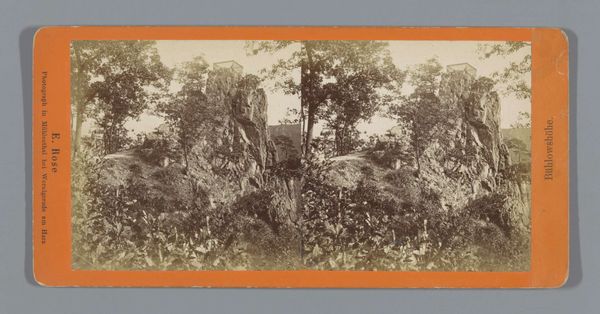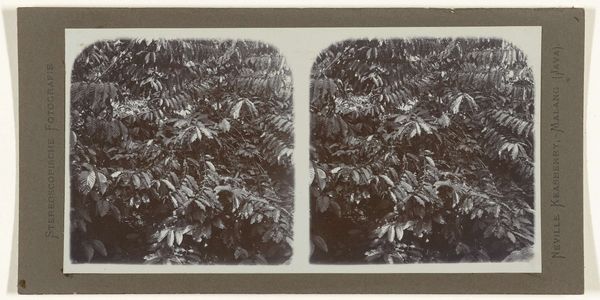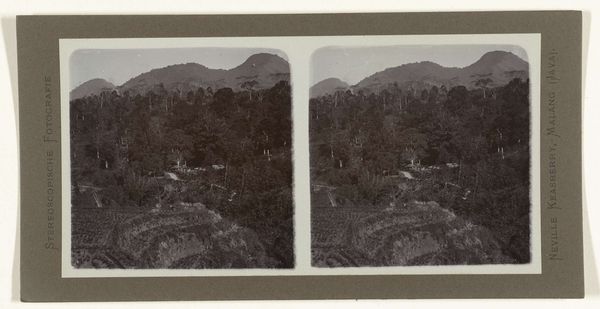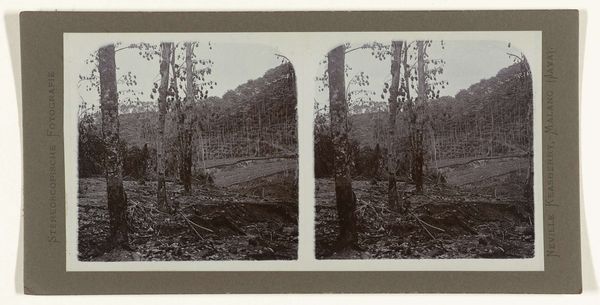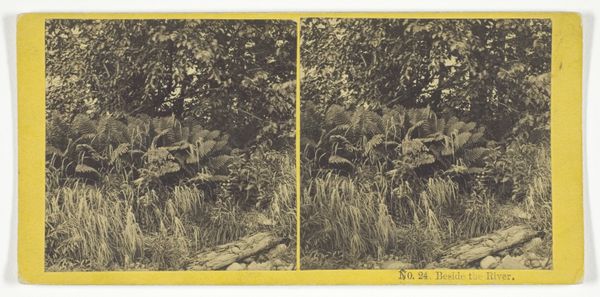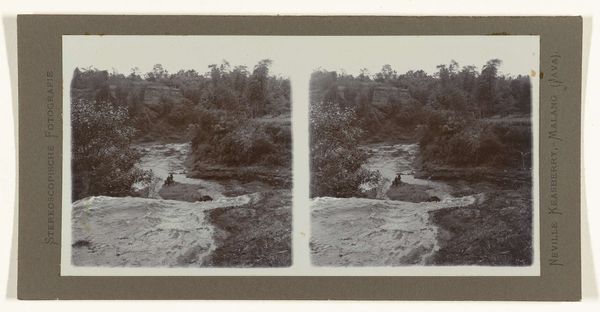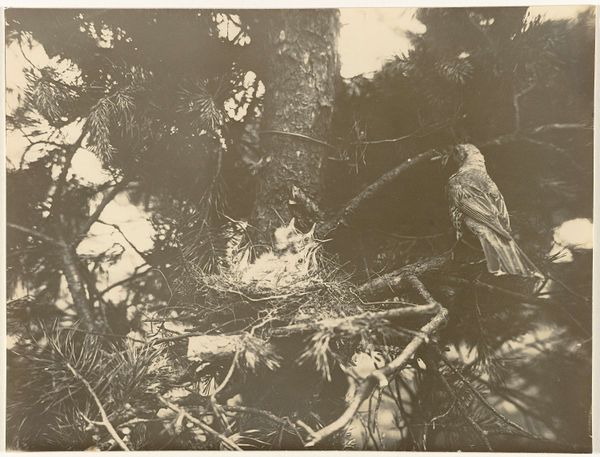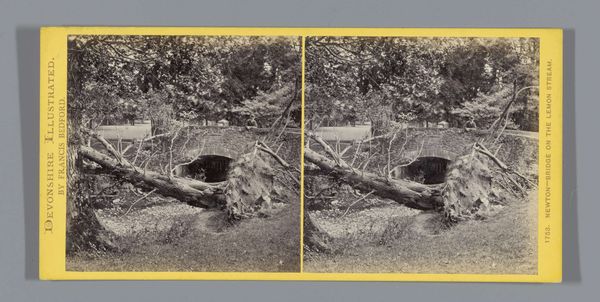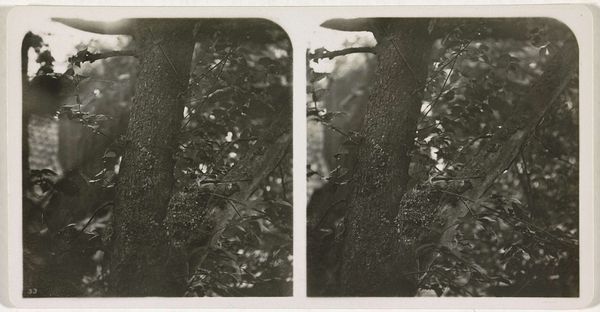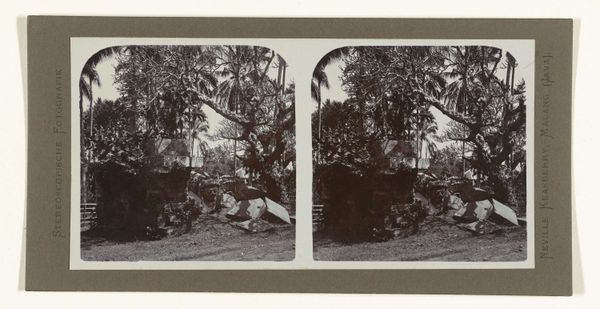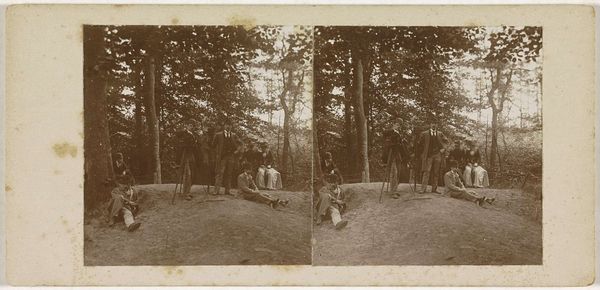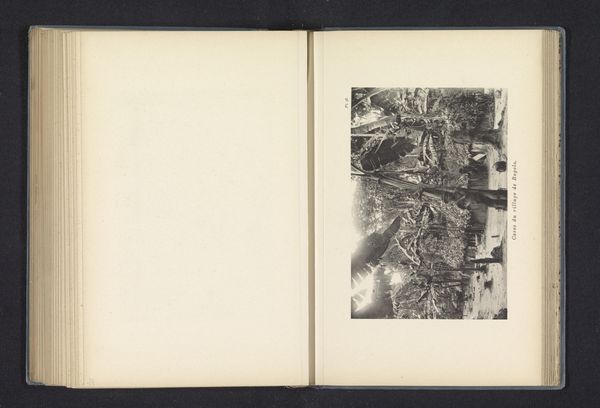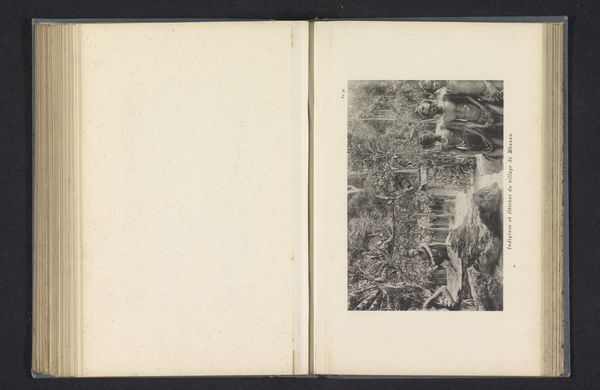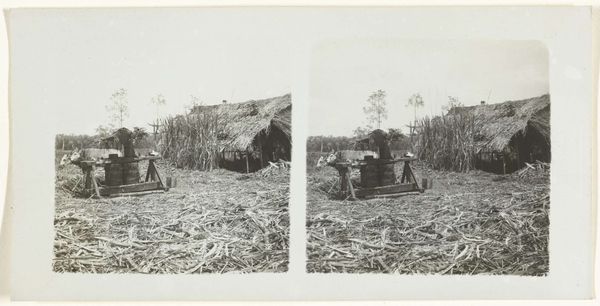
photography
#
landscape
#
photography
#
orientalism
Dimensions: height 76 mm, width 152 mm
Copyright: Rijks Museum: Open Domain
Curator: Looking at this photograph, dating from between 1900 and 1935 and attributed to Neville Keasberry, we see a depiction of the Stortgoot van de rivier Cipaganti, or "Spillway of the Cipaganti River." Editor: The immediate impression is one of intense depth. The composition utilizes the waterway as a leading line, directing our gaze through dense foliage into a kind of misty, receding distance. The monochromatic palette emphasizes tonal shifts, giving a great sense of atmosphere. Curator: The framing is particularly interesting; notice how the overhanging vegetation at the top and sides functions almost as a proscenium arch. This contributes to the scene's dramatic sense of being viewed, of staging a controlled glimpse into a space of managed wilderness. Editor: I find the symbol of water as controlled, channeled resource quite striking. Throughout different eras and regions, the imagery of managed waterways always alludes to progress, the dominance of man over nature. I see this same tension expressed here, within the careful photographic treatment, it transforms into an image ripe with imperialistic ambition. Curator: Indeed. One must also consider that photographic practices during this period in colonized regions like Indonesia were, by their very nature, tied to this imperialistic gaze. The composition itself is calculated; notice the interplay between light and shadow. Keasberry uses these devices to craft not simply a record, but a deliberate, aesthetically considered statement. Editor: Yes, that contrast speaks volumes. Also, the structure of the spillway itself calls attention. Its geometry provides contrast for all that natural abundance – the ordered, stacked segments and linearity draw focus against that thick backdrop of natural, cascading plant life. Curator: It creates an interesting duality between an idealized Orientalist landscape versus this very real, functional structure which exists to serve perhaps a far more complicated reality. The photographer acknowledges, through structural and tonal nuance, a multi-layered historical, economic, and social existence that moves beyond aesthetics. Editor: Well observed, that sense of function layered into idyllic aesthetic impressions is quite moving here. Thanks to the photo's tonal shifts and structural form, we’re both challenged and rewarded when we analyze the rich story told by its composition.
Comments
No comments
Be the first to comment and join the conversation on the ultimate creative platform.
